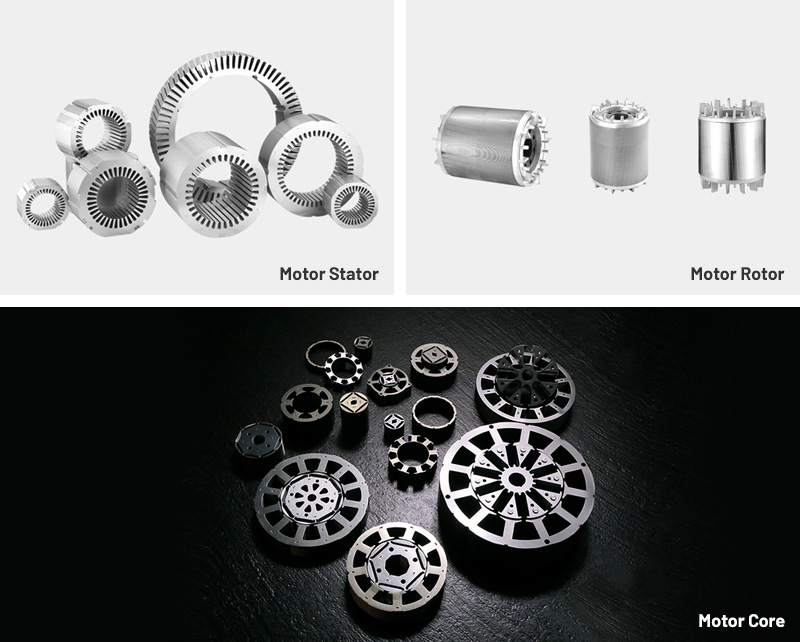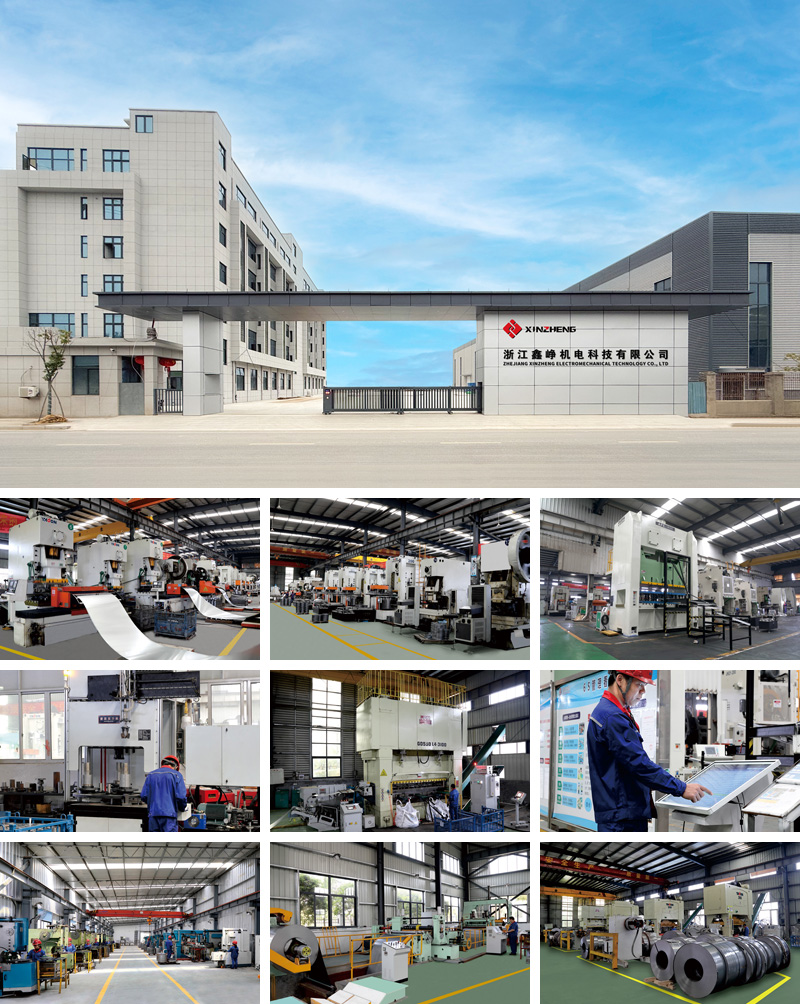The demand for low-noise, high-efficiency electric motors has grown steadily across industrial automation, HVAC equipment, pumping systems, logistics machinery, and smart manufacturing. As factories upgrade to meet higher energy-efficiency regulations and stricter acoustic standards, YE3 motors—known for meeting premium efficiency levels—have become the preferred choice among OEMs and equipment manufacturers. However, the motor’s performance depends heavily on the quality of its laminations, which form the magnetic core of the stator and rotor.
Low-noise YE3 motor laminations represent a specialized category of steel laminations engineered to minimize vibration, reduce magnetic losses, and support stable torque output under varying loads. As industries shift toward more compact and environmentally responsible motor designs, lamination technology has become a primary factor in determining the final motor’s noise level, energy consumption, and long-term durability.
Although noise in electric motors can originate from mechanical imbalance, air-flow turbulence, or electromagnetic forces, the lamination structure plays a central role in controlling acoustic performance. Low-noise YE3 motor laminations reduce noise through the following engineering principles:
Uniform flux density lowers harmonic distortion, which directly reduces magnetic vibration and audible hum.
Accurate lamination geometry prevents rotor–stator eccentricity and avoids resonance peaks.
High-grade silicon steel reduces core losses, mitigating local heating and electromagnetically induced vibration.
Controlled stack pressure and interlocking features ensure structural stability during rotation, decreasing the risk of lamination rattle.
Surface insulation coatings and stress-relief annealing help maintain stable magnetic performance and reduce magnetostriction.
These characteristics collectively define the engineering intent behind low-noise YE3 motor laminations.
The manufacturing of laminations for YE3 motors involves several critical material and process decisions:
Typical materials include:
Non-oriented electrical steel (NOES) for general YE3 motors
High-grade 35WW, 50WW, or M series steels for higher efficiency targets
Low-loss, high-permeability grades to reduce magnetic noise
Material thickness, usually 0.35 mm or 0.50 mm, directly influences core loss and acoustic output.
Manufacturers use:
High-speed progressive die punching for mass production
Laser cutting for precision prototypes or low-volume projects
Fine blanking for complex geometries requiring superior edge precision
The cutting method determines the degree of residual stress, which affects iron loss and noise levels.
Lamination surfaces are coated with:
Inorganic phosphate coatings for heat resistance
Organic insulation layers for improved stacking performance
Hybrid coatings with enhanced adhesion and anti-corrosion properties
Uniform coating thickness contributes to lower eddy-current losses.
YE3 motor laminations require controlled stacking to maintain dimensional accuracy, reduce vibrations, and ensure uniform air-gap distribution. Assembly methods include:
Interlocking tabs
Welding
Riveting
Bonded core technology
Bonded cores, often used in low-noise applications, significantly reduce mechanical resonance.
To minimize punch-induced stress and improve magnetic performance, laminations may undergo high-temperature annealing. Stress reduction is essential for maintaining consistent performance across YE3 motor efficiency classes.
The acoustic and electromagnetic performance of low-noise YE3 motor laminations is influenced by several engineering factors:
Lower core loss and higher permeability directly reduce magnetostriction—one of the main contributors to electromagnetic noise.
Rotor–stator alignment and air-gap uniformity are highly sensitive to tolerance deviations. Precision tolerance control prevents unwanted harmonics.
Higher stacking factor leads to better flux continuity. However, uneven flatness can cause noise-generating air-gap irregularities.
Flaking or uneven coatings increase eddy-current losses and reduce motor efficiency.
Stress from punching increases noise; stress-relief processes reduce this impact.
Balancing errors lead to mechanical vibration, particularly noticeable at high speed.
Bonded cores or precision-welded assemblies typically deliver better noise reduction than traditional riveting.
Understanding these factors allows OEMs to evaluate the suitability of lamination suppliers and optimize motor design.
Choosing a supplier of low-noise YE3 motor laminations involves more than material specifications. Key evaluation criteria include:
Reliable suppliers maintain partnerships with steel mills that produce consistent NOES grades with traceable quality.
Progressive dies must support high-speed punching with minimal burr height. Manufacturers with in-house tooling facilities often provide superior consistency.
Automated stacking, coating, and inspection systems reduce human error and variability, crucial for noise-sensitive motor applications.
Suppliers should conduct:
Core loss testing
Stacking factor measurement
Burr height inspection
Coating resistance testing
Air-gap symmetry verification
Leading suppliers can support custom slot designs, modified flux paths, prototype lamination development, and motor optimization consultations.
Common benchmarks include:
IEC 60034
GB/T 19223
RoHS compliance
Material certification (EN, ASTM, JIS)
These indicators help OEMs ensure long-term reliability and performance.
Despite advancements in motor engineering, several challenges remain in YE3 motor lamination production:
A motor may be quiet at rated load but noisy at low or high loads due to magnetic saturation or harmonic imbalance.
Material batches from different mills may differ slightly in magnetic properties, affecting consistency.
Even small increases in burr height can cause noise and increased iron loss.
Improper welding or riveting can distort the lamination stack, enlarging air-gap variation.
Inadequate annealing may leave stress unresolved; excessive annealing can weaken coatings.
Understanding these issues helps engineers anticipate performance risks in the production chain.
Low-noise YE3 motor laminations are widely used in:
HVAC motors requiring low acoustic output in commercial buildings
Industrial fans and blowers where mechanical resonance is magnified
Pumps and compressors operating in noise-sensitive environments
Automation and robotics demanding stable torque and vibration control
Logistics conveyors where quiet operation improves workplace conditions
Precision machinery with strict noise thresholds
These laminations enable equipment manufacturers to meet both energy-efficiency directives and acoustic performance targets.
Several market and technology trends continue to shape the evolution of YE3 motor lamination design:
YE4 and IE5-level motors are pushing manufacturers toward ultra-low-loss steel grades and improved lamination structures.
Bonded laminations reduce mechanical noise and improve magnetic uniformity.
Finite-element analysis (FEA) enables optimized flux paths and reduced harmonic content.
Laser-cut laminations support R&D without tool investment, allowing rapid iteration.
Next-generation materials significantly reduce electromagnetic acoustic emissions.
Environmental regulations are driving demand for recyclable, low-emission steel with documented supply chains.
Real-time monitoring systems detect burr height, coating consistency, and dimensional drift.
These trends indicate that lamination technology will continue advancing alongside global efficiency regulations and noise-control standards.
1. Why do laminations impact motor noise?
They influence magnetic flux distribution, magnetostriction, and air-gap uniformity—three major contributors to electromagnetic noise.
2. Are thinner laminations always better?
Thinner steel reduces core loss but increases material cost. The optimal thickness depends on efficiency requirements and motor design.
3. How do coatings affect performance?
Coatings prevent inter-lamination eddy currents and maintain insulation integrity, directly influencing noise and efficiency.
4. Can poor assembly increase noise even with good laminations?
Yes. Misalignment, uneven stack pressure, and rotor imbalance can create noise even when using high-quality laminations.
5. Are low-noise laminations only used in premium motors?
They are most common in YE3 and higher-grade motors, but many OEMs adopt them for general-purpose motors to meet acoustic regulations.
Product Category

Comprehensive Strength


Copyright © Zhejiang Xinzheng Electromechanical Technology Co., Ltd. All Rights Reserved.
This website uses cookies to ensure you get the best experience on our website.